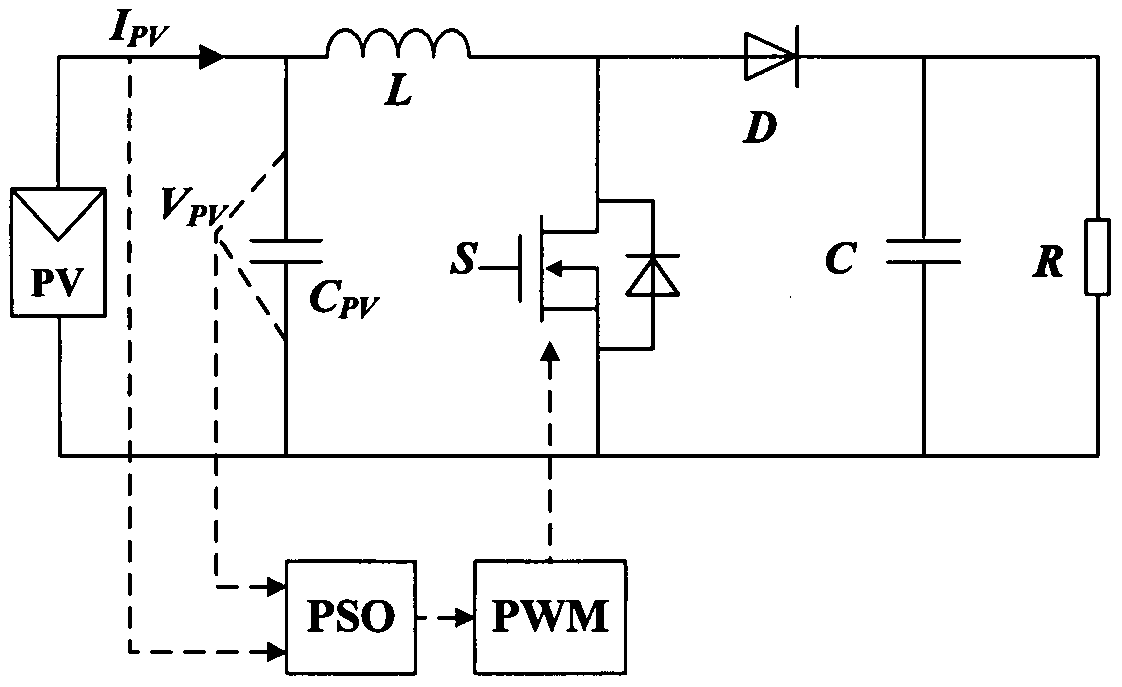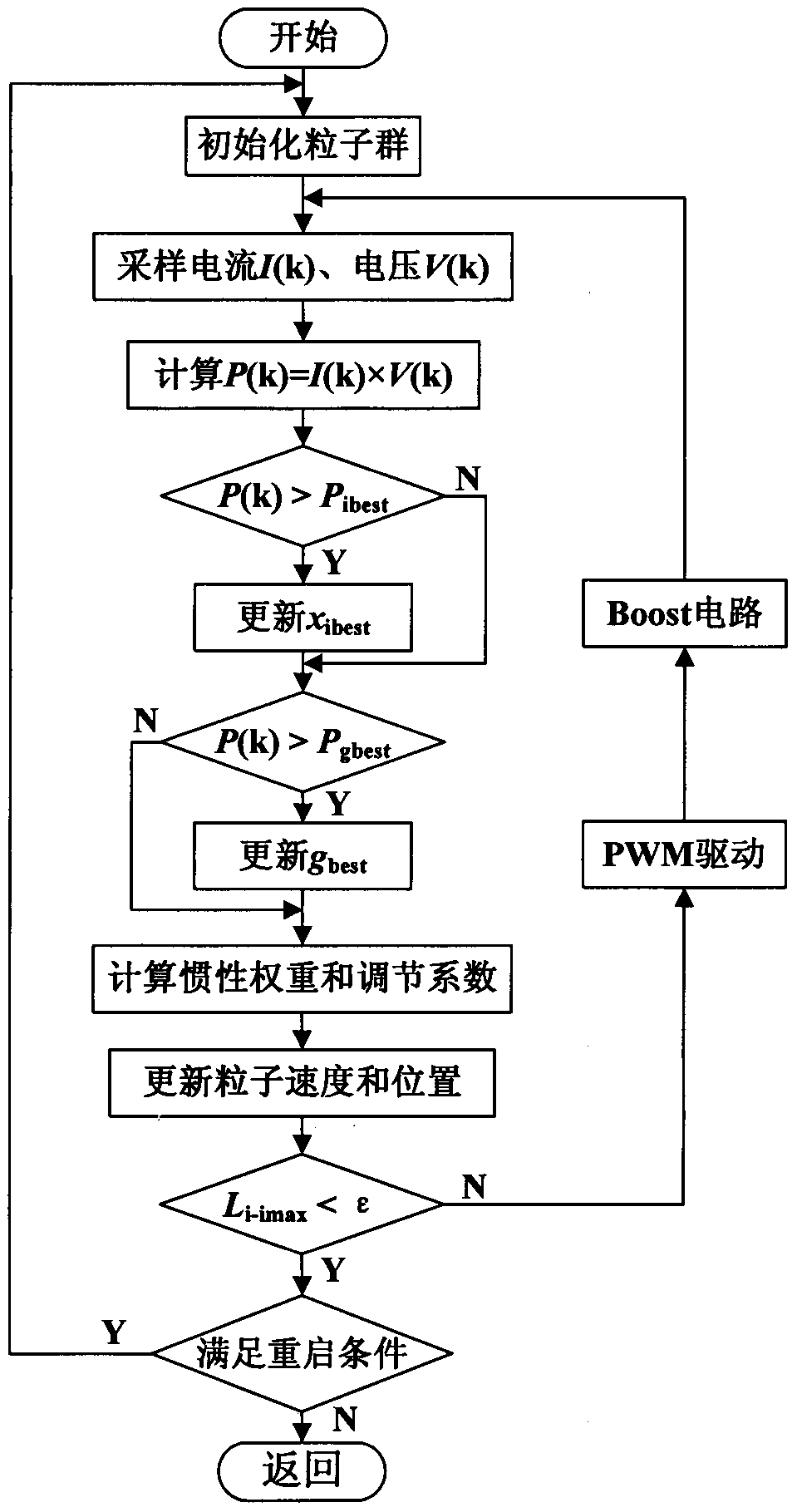An improved particle swarm MPPT algorithm based on dynamic inertia weights and multi-threshold restart conditions
A technology for improving particle swarm and inertia weight, applied in photovoltaic power generation, instruments, adjusting electrical variables, etc., can solve the problems of photovoltaic array power reduction, energy loss, power loss increase, etc., to avoid restart failure, improve convergence and The effect of tracking speed and reducing energy loss
- Summary
- Abstract
- Description
- Claims
- Application Information
AI Technical Summary
Problems solved by technology
Method used
Image
Examples
Embodiment Construction
[0026] The present invention will be described in detail below in conjunction with the accompanying drawings.
[0027] Taking the photovoltaic power generation system based on Boost circuit as an example, the system structure is as follows: figure 1 As shown, the inductor L, capacitor C, switch tube S, diode D, and DC load R constitute the Boost main circuit, and the Boost input terminal is connected to the output of the photovoltaic array.
[0028] The system applies the improved particle swarm algorithm to realize MPPT tracking. The working principle is as follows: Sampling the output current I of the photovoltaic array PV and the output voltage V PV , particle swarm algorithm based on IPV and V PV Perform an iterative search and deliver the voltage reference signal V for the next iteration to the PWM controller ref , the controller sends a drive signal to the switching tube S of the Boost circuit, controls the switching on and off of the switching tube S, and changes the...
PUM
 Login to View More
Login to View More Abstract
Description
Claims
Application Information
 Login to View More
Login to View More - R&D
- Intellectual Property
- Life Sciences
- Materials
- Tech Scout
- Unparalleled Data Quality
- Higher Quality Content
- 60% Fewer Hallucinations
Browse by: Latest US Patents, China's latest patents, Technical Efficacy Thesaurus, Application Domain, Technology Topic, Popular Technical Reports.
© 2025 PatSnap. All rights reserved.Legal|Privacy policy|Modern Slavery Act Transparency Statement|Sitemap|About US| Contact US: help@patsnap.com



